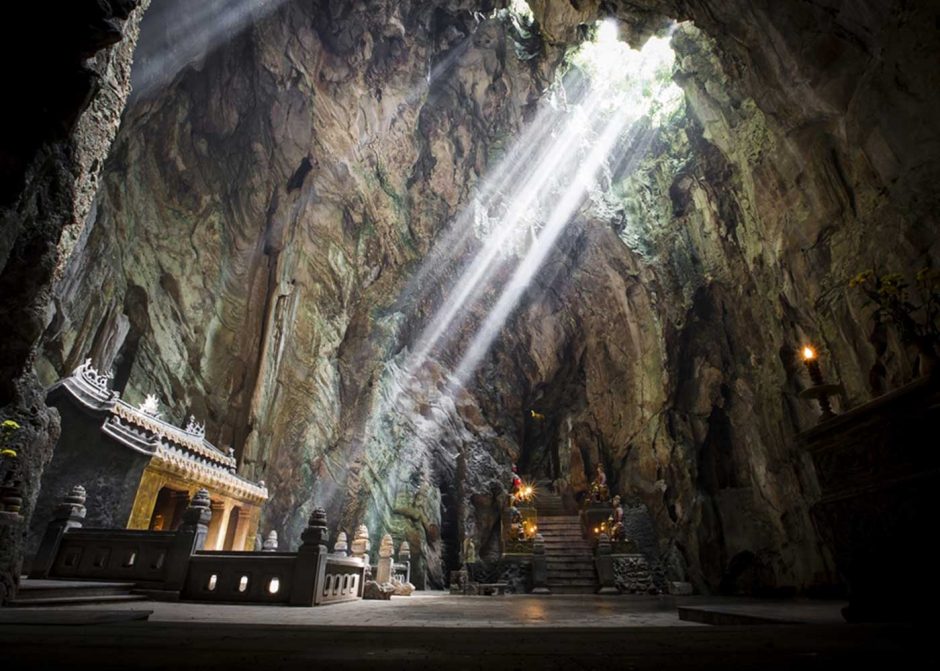Am Phu Cave, located in Vietnam’s legendary Marble Mountains, is the phantasmagoric recreation of a Buddhist Hell, and there are precisely three ways to get there from Hoi An: by bus, taxi or car, depending on how much time and money you want to invest. The bus takes roughly three hours, giving you a priceless slice of local life at only 4 dollars, while the other options are a little costlier, at 13-16 dollars. Nonetheless, the latter modes of transportation get you there in approximately 17 minutes so you can spend extra time checking out where you could end up for all eternity if you aren’t virtuous in this lifetime.
Located just off the coastal road of Danang Beach, the Marble Mountains, or Ngu Hanh Son, consist of a craggy cluster of five limestone and marble outcrops, each named after the natural element it is supposed to represent: Thuy Son (Mt. Water), Moc Son (Mt. Wood), Hoa Son (Mt. Fire), Kim Son (Mt. Metal), and Tho Son (Mt. Earth). According to local legend, these iconic projections were eggshells left on earth by a dragon.
Featuring an abundance of caves, caverns and pagodas – as well as lots of stairs – the Marble Mountains are home to several significant Buddhist sanctuaries and Hindu grottoes, all highly popular places of worship for the local population. At the foot of the mountains lies a 300-year-old village, Non Nuoc. There, craftsmen still ply the traditional marble-sculpting trade of their ancestors, whose iconic stone carvings and bas-reliefs adorn the geological wonder’s sacred nooks and crannies.
The Am Phu Cave
Once you step inside Mount Water’s 400-year-old pagoda, Tam Thai, the entrance leads to a self-contained universe consisting of paradise and purgatory, the layout and concept of which are fairly straightforward: up the winding stairs towards Heaven; downwards, towards Hell.
Hell, naturally, is the place to be.
A dark, humid underworld lurking with figurines of fantastical, fear-inducing demons as well as sinners enduring gruesome punishments and altars with candles and burning incense, this cave is a colorful embodiment of Hell with an enduring message that is at the core of Buddhist belief: every deed has its consequences. The punishment of wrongdoing represents Karma, and the degree of pain one suffers depends on the severity of the sins one has committed in one’s former lives.
This moral lesson is poignantly epitomized in the statute of Saint Arahat Mungkalaram and his mother, who has been suffering in Hell for her sins. He attempts to save her by getting her to reflect on her ways and repent for her wrongdoing.
Ultimately, whether you’re a sinner or a saint, soul-searching is always a good thing to do.
In the meantime, go to Hell! You won’t regret it.

Recent Comments